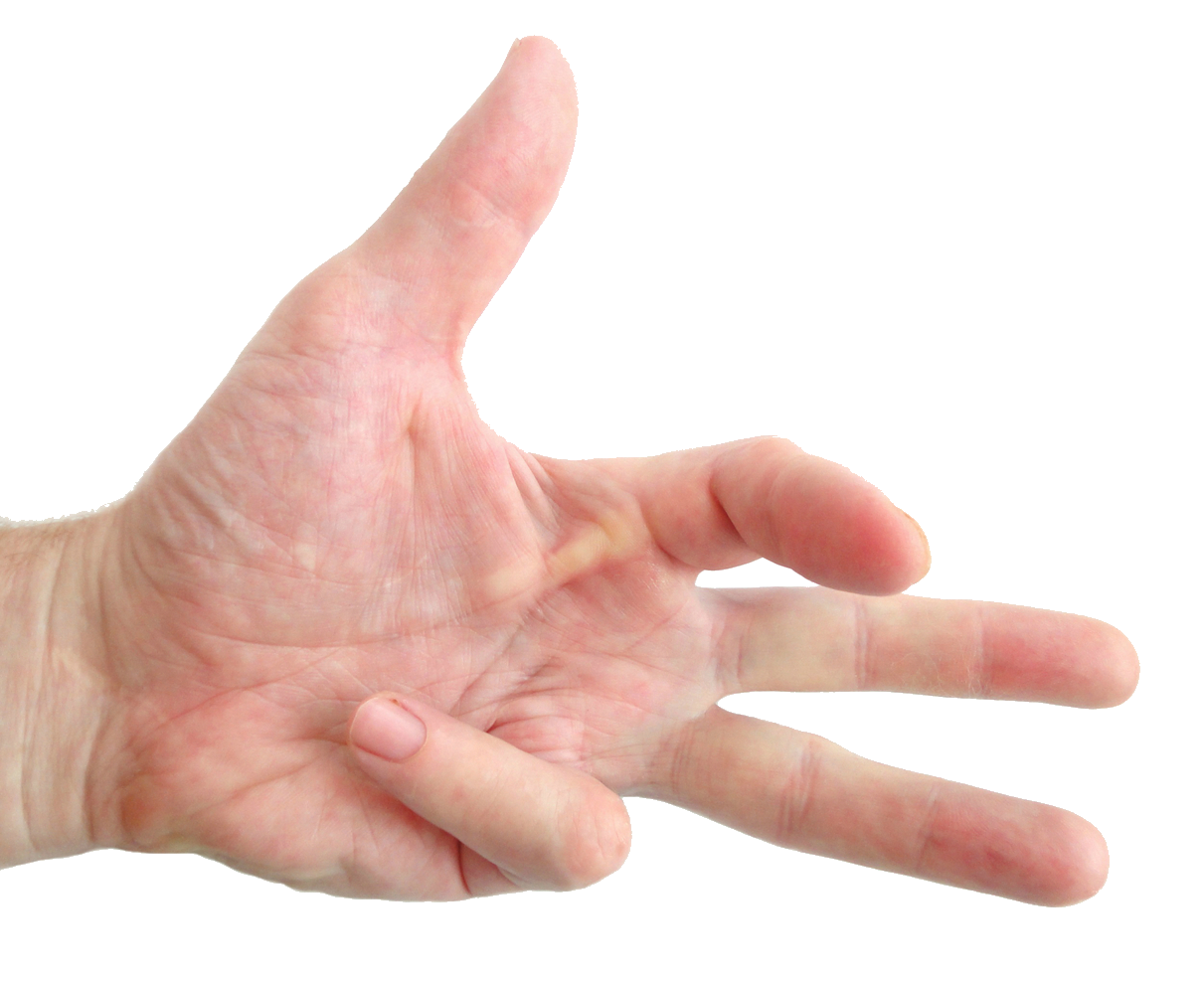Dupuytren's disease

Dupuytrens contracture occurs from thickening of the fascia (tissue) in the palm of the hand. The fascia usually acts to prevent the fingers from bending too far backwards and also to help hold the other structures in the hand in place. When the fascia thickens and contracts it can pull the finger down into a curled-up position. The fascia can also forms nodules in the palm and fingers.
When Dupuytren's contracture occurs, it is usually in later life. The exact cause is unclear but there are many associated factors which make it more likely someone will develop it. These include: a family history (where people in your immediate family have it), diabetes, certain medications, smoking and following some injuries to the hand.
Often the first thing people notice are firm nodules (lumps) in the fingers or palm. With time the fingers may start to curl up or a tight cord of tissue may be felt or seen.
Some people try splinting the fingers to keep them straight but this has not been shown to reliably prevent the progression. It is however important to keep the fingers moving to prevent additional stiffness.
In more recent years a special injection into the affected areas can break down some of the thickened tissue. The finger can then be manipulated straight. This is only suitable in specific cases.
Needle fasciotomy, where a needle is passed multiple times through the thickened tissue can work to release a particular thickened cord of tissue and help straighten the finger.
The most reliable treatment is to remove the abnormal thickened tissue. This is usually performed through a zig-zag cut on the front of the finger or palm of the hand. The exact place of the cut will depend on where the problem is. The thickened tissue is removed and the skin closed again.
Sometimes a splint is applied to the hand and / or fingers to keep them straight while the skin heals. The physiotherapists will be able to advise on exercises to prevent the fingers getting stiff and also to manage the scars. The scars can be quite lumpy to begin with but usually soften with time.
Non-surgical treatments can provide a quick improvement but the contracture often returns before too long. Surgery provides a more established, longer lasting improvement.